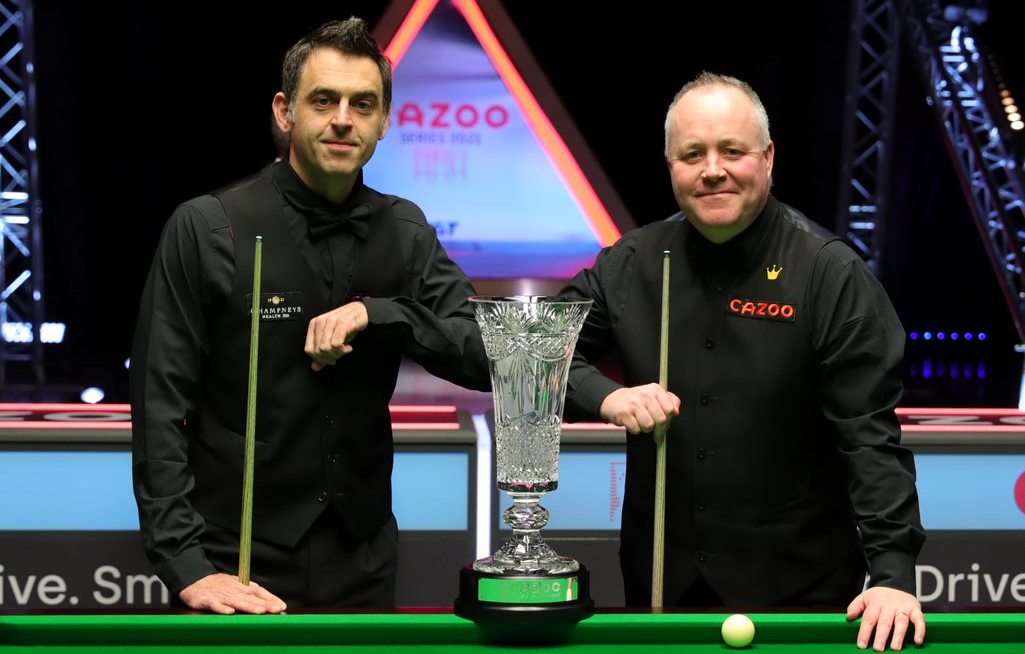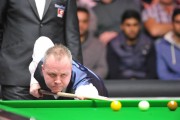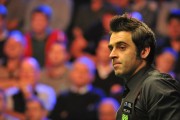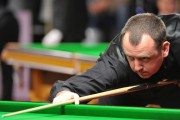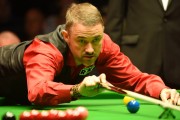Who is the best snooker player? Those who follow the sport closely will have had a similar discussion at some point in their lives. And now, for the first time, there exists a scientific answer to that question. Guest author Daniel Müller and fan of John-Higgins took a closer look at this paper. This article is also available in German.
Fans who passionately support specific players will certainly not feel indifferent to this topic. It is only natural that personal preferences and emotions have a significant impact on how we judge professional sportspeople. What is particularly refreshing about the examined paper is that, in contrast to many newspaper articles, blogs and biographies, it offers a scientific approach on the matter. Its findings are based exclusively on mathematical calculation and not influenced by personal opinions.
And those findings truly strike the reader’s attention. At first glance, they may even come as a surprise. For instance, Ronnie O’Sullivan, often labelled Snooker’s most naturally gifted and even the greatest player, only features in second place. Seven times world champion and record holder Stephen Hendry does not top the list either. The study rather concludes that John Higgins is the highest-performing player after all.
I. How does the ranking list work?
That statement is determined by a complex networks approach developed by Joseph O’Brien and James Gleeson at the University of Limerick. In creating said network, the authors not only included data of all matches won by a player in professional competition, but also considered the quality of a player’s opposition. Therein lies the main difference to usual ranking systems – be it the official World Snooker Tour rankings or other lists based on tournament victories, breaks or other stats.
The official ranking list was introduced in 1976/1977 and originally featured a ranking points system. In 2013, it was replaced by a prize money system. This allowed for singular tournament victories to potentially have a bigger impact on a player’s ranking position compared to the previous system. Consequently, performing well in a select number of lucrative tournaments (e. g. the World Championship, UK Championship) and not participating at all in smaller events (e. g. the Gibraltar Open) could become attractive for top players.
O’Brien and Gleeson questioned whether the current WST ranking list accurately depicts the players actual performances. Their main objective was to compare ranking performances of professionals in different decades. To that end, they analysed results from 47710 professional matches and 657 tournaments held between 1968 and 2020. These data include ranking events as well as invitational events such as the Masters.
II. What does the study discover?
1. The best snooker player
A ranking of Snooker players over all time based on a PageRank score is the result of the complex networks approach used in this study. According to it, John Higgins takes first place (PageRank score of 0.0204), followed by Ronnie O’Sullivan (0.021) and Mark Williams (0.0169). Stephen Hendry, who still leads some other ranking systems only comes in a distant fourth place (0.0164). Surprisingly, Steve Davis, who after all has won the World Title six times only ranks eighth on the list behind Mark Selby, Judd Trump and Neil Robertson. Shaun Murphy and Jimmy White complete the top 10 on that list.
Somewhat less surprising are the following players ranked from 11 to 20. These include several former world champions and long-time members of the Top 16 such as Stephen Maguire, Peter Ebdon, Barry Hawkins and Stuart Bingham. Perhaps most notably Ding Junhui only ranks 18th on the list (0.0103) despite his formidable tournament success.
2. Competition is key!
It becomes obvious that the PageRank results neither correspond with rankings based upon the number of ranking events won (O’Sullivan tops that list with 37 titles), nor with the number of world titles won (Hendry comes in first place with seven titles) or with the official WST rankings (Hendry occupied the number one spot for nine years). Higgins has won four world titles, 30 ranking titles[1] and been ranked world number one over three years in total.
This phenomenon is explained by the authors as follows: it comes down to what time span players have taken to win their ranking tally. The longer that period, the less quality opposition a player will have had to face. Some players like Hendry or Davis have won of their titles in the relatively short time span of a decade and thus, had to overcome fewer top players. On the other hand, Higgins, O’Sullivan and Williams all won their titles over a significantly longer period and managed to dominate the sport in doing so (even if they never acquired the same level of dominance as Davis in the 80s and Hendry 90s). To achieve that, they had to beat more opponents – not least each other.[2]
For instance, O’Sullivan and Higgins have faced each other so far in 73 matches, which is more often than any other fixture in Snooker. Taking this factor into account, the PageRank algorithm favours players who have been successful over longer time periods. Players like Hendry and Davis whose success rate dropped after their dominance in the game rank lower.
If you look at Higgins’ career records, it is noticeable that he has performed outstandingly well against fellow top players for nearly three decades. Even though he enjoyed the most success during the 1990s and 2000s, he still won another world championship and reached three world finals between 2011 and 2019. In total he has managed to beat O’Sullivan in 31 Matches, which is more than any other player so far. 15 of those encounters took place in Semi-finals or Finals. Against Hendry, Higgins’ head-to-head record is tied at 18 – 18, while he leads their head-to-head against Williams (34 – 22)[3] and Davis (22 – 5), significantly. Therefore, it is no actual surprise that the Scot features as best player of all time, but rather the result of his level of performance against other top players.
3. What does this say about the sport?
The authors also draw some interesting conclusions about the state of Snooker. For example, 18 of the 20 best players are currently still playing, only Davis and Ebdon have retired from the professional game. This indicates the strength in depth of the current Professional tour. One might even refer to the present as Snooker’s “golden age”.[4]
Apart from the study at hand, breakbuilding stats do support this theory. The first player who managed to compile more than 100 century breaks during a single season was Neil Robertson 2013/2014. His record was almost matched by Judd Trump, who made 102 centuries in 2019/2020. And even during the current season Trump has already made 76 centuries, followed by Kyren Wilson (59), Selby (50) and Robertson (47). Until the season concludes more breaks are to be expected.[5]
Not much longer than ten years ago, such stats where unthinkable. There may be different reasons for that. But it is certain that the number of tournaments has increased significantly since Barry Hearn’s arrival in 2010. During the 2017/2018 season, a record 26 professional tournaments were held.[6] In contrast, the 2009/2010 season only featured six full-ranking events. More tournaments lead to more playing opportunities and thus, increase the chance of compiling high breaks.
4. Important factor: the number of tournaments
But there is another factor to be considered: with more tournaments held there are also more successful players compared to the 2000s and the 90s. Several players who could have been considered ‘journeymen’ were suddenly winning tournaments from 2010 on. The perfect example is Stuart Bingham, who turned professional in 1995/1996 but won his maiden ranking title only in 2011. He followed it up with the world title in 2015 and has since been consistently ranked within the Top 16. Barry Hawkins has enjoyed a similar career pattern, while other long-time professionals like Joe Perry and Ryan Day have won their maiden titles during the Hearn-era, too.
All these developments prove that since 2010, there are more potential tournament winners competing, and hence, competition on the Tour has intensified. At the same time, success in ranking events increases players’ individual levels of performance. This is likely to apply to how a player perceives his own standard of play and how confident in his game he is. But it certainly holds true to how the standard of play is evaluated mathematically. The more tournaments a player has won, the more matches he had to win en route and the stronger an opponent he is. With fewer tournaments held, only fewer players can be successful who then face less quality opposition.
III. Conclusion
One may very well ask whether this new Ranking list accurately depicts a top player’s performances in every aspect. Other factors may allow for an even more precise method of calculation. However, it cannot be denied that this system is far more convincing than usual ranking systems. Its main advantage is that it enables us to objectively compare players from different decades, as explained by the authors. To still argue that you cannot compare the 1980s with the modern era is no longer convincing. Players’ achievements must rather be judged on the base of their opponents’ quality. The more quality opposition you must face, the higher your standard of play will have to be.
With that in mind, it is no surprise that Higgins, O’Sullivan and Williams feature at the top of the ranking. Even after almost 30 years of competing professionally, they are still winning tournaments. And unlike often claimed, this is not due to the lack of competition by younger players but rather despite it. The general standard of play has never been higher in Snooker, which shows the class of the truly best players in our sport.
Source: Joseph D O’Brien, A complex networks approach to ranking professional Snooker players, Journal of Complex Networks, Jahrgang 8, Ausgabe 6, 1 Dezember 2020, cnab003, https://doi.org/10.1093/comnet/cnab003
https://academic.oup.com/comnet/article/8/6/cnab003/6161497
[1] This refers to the time span evaluated by the study. At the time of writing, Higgins has won another ranking title (Players Championship 2021).
[2] Higgins, O’Sullivan and Williams all turned professional in 1992 and have since played each other on numerous occasions.
[3] Since 2020, Williams and Higgins have already played against each other twice as of April 2021.
[4] O’Brien and Gleeson do so on page 5 of their paper.
[5] As of April 2021. At the end of the 2020/2021 season, Trump registered 90 centuries while Wilson made 74, Robertson 72 and Selby 63.
[6] Including full ranking tournaments, invitational tournaments and Pro-Am-events. Team events are not included.





